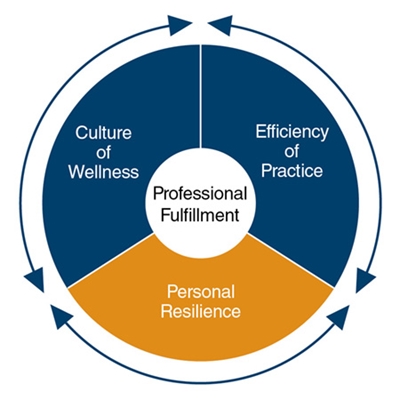Stanford University School of Medicine Radiology Department, Stanford, California
- Terry S. Desser, MD, Well-being Director
- Amin Etemad, MBA, Quality Project Manager, Radiology
- Allison Faust, BS, Manager, Radiology Quality Improvement
- Gloria Hwang, MD, FSIR, Associate Chair of Performance Improvement
- David B. Larson, MD, MBA, Vice Chair for Education and Clinical Operations
- Marc H. Willis, DO, MMM, Associate Chair of Quality Improvement
- Luke Yoon, MD, Associate Professor, Body Imaging and Musculoskeletal Imaging
“Projects from the 52in52 program not only improve practice efficiency but also offer radiologists a psychic benefit by imparting a sense of agency and power to change the conditions of the workplace.”
- Terry Desser, MD, Stanford Medicine
DEPARTMENTWIDE IMPROVEMENT PROGRAM
52in52 is a cohort-based program developed under the leadership of David Larson, MD, MBA, and now co-led by Allison Faust, BS, program administrative director, and Marc Willis, DO, MMM, program physician director. The name, “52in52,” refers to the goal of completing one improvement project for each week of the year. 52in52 supports quality improvement initiatives led by frontline staff (non-physician employees), trainees and faculty within the department.
Participants identify and solve problems in their work that cause stress or negatively influence patient care (e.g., inefficiencies and non–value-added activities such as disruptive phone calls, unnecessary mouse clicks, routine MRI and CT protocols). Any department member can submit a proposal with an issue to be addressed. Projects must be large enough that the underlying problem should not be solvable within a few days but small enough to accomplish by a department team within 10 weeks.
OUTCOME: The program has been popular since 2017, with approximately 175 projects completed to date, and costs are primarily in the form of personnel time. Employee engagement has increased significantly, and team members readily invest, recognizing the benefits firsthand through their work environment and improved patient care.
|
|
LESSONS LEARNED
The most impactful projects will come from the frontline; they are the ones doing the work. Involving and engaging them in solutions and problem solving will lead to the best outcomes. In addition, support in the form of protected time can be hard to come by but is by far one of the most important obstacles to overcome. Since it’s a cohort-based program, a structured approach wherein all groups are going through the same project stages together, it is easier to coordinate than projects starting continuously. Teams will be able to see what their peers are doing and gain ideas for their projects.
